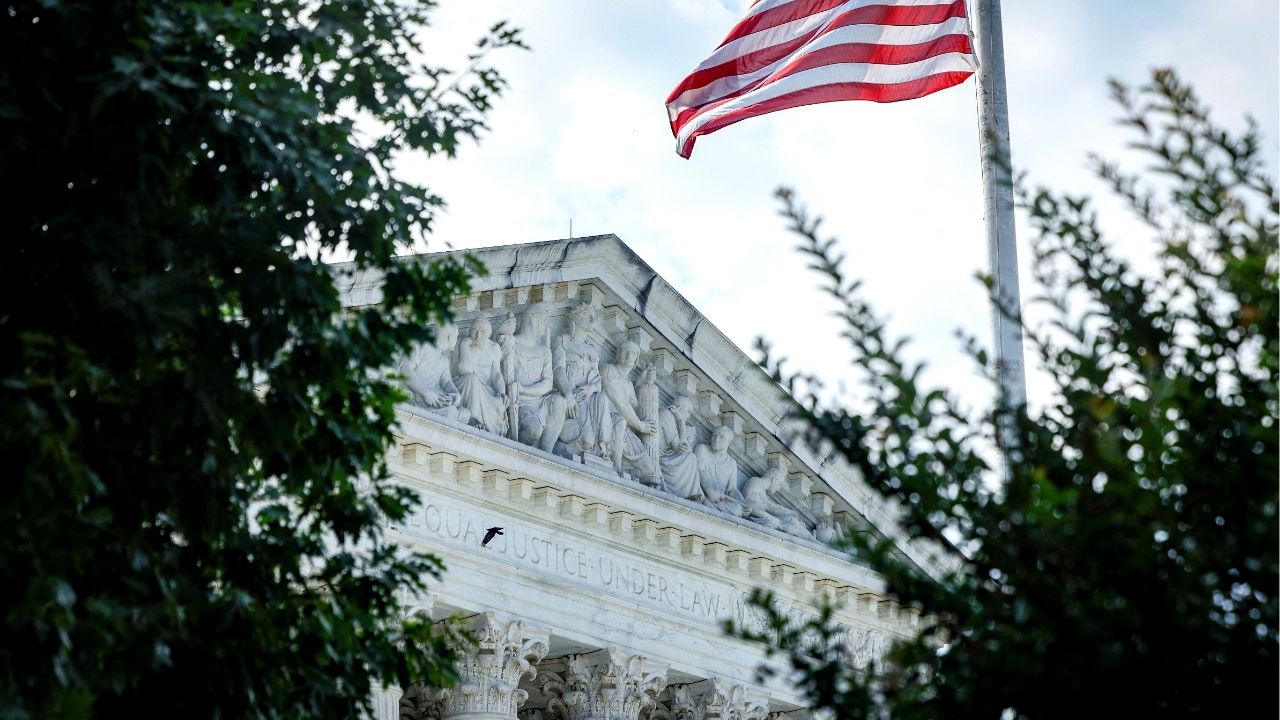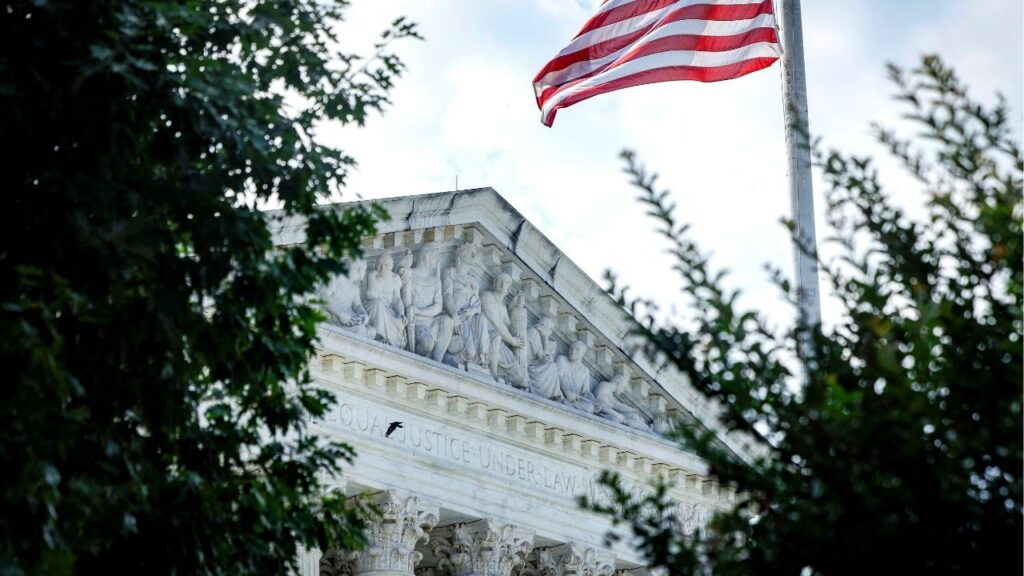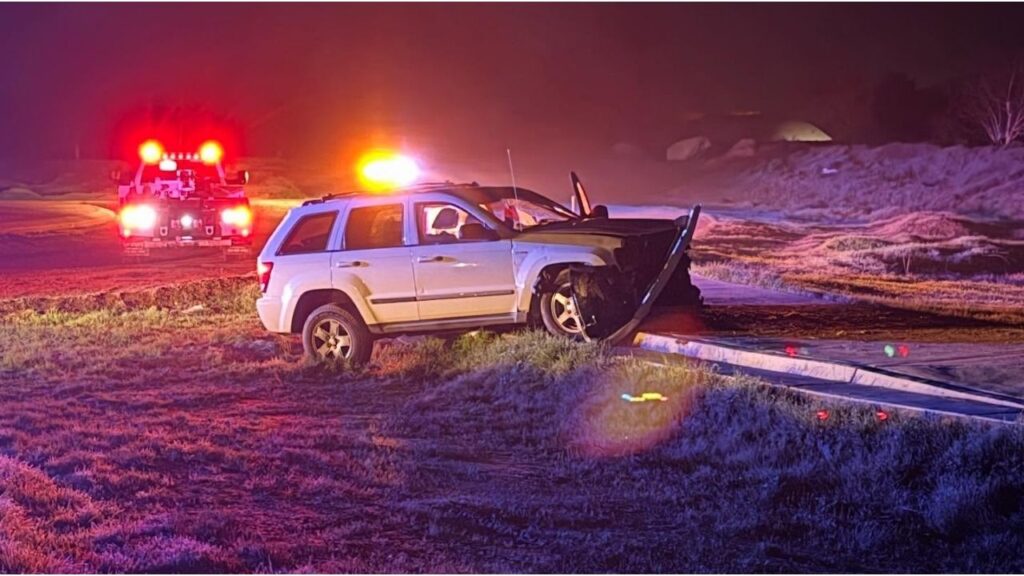A view of the U.S. Supreme Court building in Washington, D.C., June 17, 2024. (Reuters/Evelyn Hockstein/File)

- The decision blocked, for now, a lower-court ruling that had said Texas could not use the redrawn map.
- Justice Samuel Alito, who is assigned to handle emergency applications from that region of the country, issued the administrative stay.
- In a 160-page ruling, a federal court previously had blocked the use of the new map while litigation continues over its legality.
Share
|
Getting your Trinity Audio player ready...
|
WASHINGTON — The Supreme Court on Friday evening temporarily allowed Texas to use its newly redrawn, Republican-friendly congressional voting map for the 2026 midterm elections.
The decision blocked, for now, a lower-court ruling that had said Texas could not use the map. Justice Samuel Alito, who is assigned to handle emergency applications from that region of the country, issued the administrative stay, a temporary ruling designed to give the full court time to consider the issue.
The Texas attorney general earlier in the evening had filed an emergency application with the justices, asking them to allow the state to use the new map.
Alito requested that the civil rights groups that had challenged the map respond to the attorney general’s request by Monday at 5 p.m., signaling the court would likely consider the issue speedily.
Federal Court Previously Blocked the Texas Map
Texas sought the justices’ intervention after a panel of federal judges in El Paso on Tuesday blocked the map from going into effect in time for the elections, a setback for an aggressive push by Texas Republicans and President Donald Trump to flip Democratic seats in the state.
By a vote of 2-1, the divided panel had sided with the civil rights organizations, arguing it was an unconstitutional racial gerrymander. In the court’s ruling, Judge Jeffrey V. Brown of the U.S. District Court for the Southern District of Texas, a Trump appointee, wrote that “substantial evidence shows that Texas racially gerrymandered the 2025 map.”
In the 160-page ruling, the judges blocked the use of the new map while litigation continues over its legality. In the meantime, they ordered the state to use a map enacted by the Texas Legislature in 2021 for the November 2026 elections.
Texas’ Republican-controlled state Legislature redrew its map this summer, creating five new Republican-favored seats as part of a strategy by Trump to block Democrats from taking control of the House of Representatives.
After the appeals court ruling, Texas Attorney General Ken Paxton announced that the state would appeal to the Supreme Court. In a statement, Paxton said he fully expected “the court to uphold Texas’ sovereign right to engage in partisan redistricting.”
The Texas legal loss was the latest challenge for the president’s effort to redraw state congressional maps to favor Republicans in the lead-up to the midterms. Last week, Indiana Republicans rejected the president’s request that they redraw congressional districts.
Gerrymandering Based on Race?
The fight over the Texas map is also the latest in a string of voting and elections-related challenges facing the justices. In October, they heard a challenge to Louisiana’s congressional voting map. In that case, a group of white voters argued that the state’s new map, redrawn after the latest census to include a second majority-Black district, was an illegal racial gerrymander that violated the Constitution’s guarantee of equal protection.
A decision in the case is expected by the end of June or early July, and it could shape how the court views the Texas challenge. In Texas, challengers have argued that even as lawmakers sought to create new districts to achieve a partisan advantage, they in fact gerrymandered based on race.
The nationwide push to redraw congressional maps before the midterms is highly unusual, breaking from decades of settled norms around the process for carving up legislative districts. The drive by the president has set off a race in states throughout the country. This month, California voters approved an aggressive plan to redraw the state’s congressional districts, potentially flipping five Republican seats, a major victory for Democrats. That map has also been challenged in court.
This article originally appeared in The New York Times.
c.2025 The New York Times Company


















